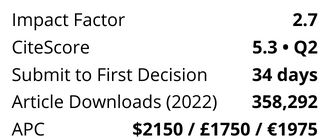The relative importance of snowmelt versus rain-generated floods on sediment transport in arctic streams is largely unknown because studies documenting either event-type are rare. An August 2002 precipitation event produced the largest discharge level (snowmelt or rain) over the previous ten-year period of hydrologic and geomorphologic monitoring in the Upper Kuparuk River, Alaska providing an opportunity to document the geomorphologic response to of an arctic stream to an extreme event. In this study we document the geomorphologic response and estimate the bedload transport rate using the virtual velocity method. This flood mobilized virtually the entire bed, with the exception of random boulders greater than 0.5 m. The channel cross-section and water edge survey data illustrate the considerable morphologic response generated by the flood. The magnitude of this response resulted in only a 13% tracer rock recovery rate. The total bedload transport was estimated to be 870 m3 of bed material through the study cross sections. Channel morphology, and therefore habitat, is maintained by large and infrequent summer rain events. These events, particularly when they occur in the late summer months, when active layer depth is at its greatest, have the potential to generate orders of magnitude more bedload transport than a snowmelt runoff event. It is unclear, however, if the lack of significant bedload transport during snowmelt is due to protection by bedfast ice or if flows are insufficient.
Skip Nav Destination
Article navigation
Research Article|
August 01 2008
Case study of a large summer flood on the North Slope of Alaska: bedload transport
J. P. McNamara;
1Department of Geosciences, Boise State University, 1910 University Dr., MG 121, Boise, ID 83725, USA
Tel.: +1 208 426 1354; E-mail: jmcnamar@boisestate.edu
Search for other works by this author on:
J. A. Oatley;
J. A. Oatley
2Water and Environmental Research Center, University of Alaska Fairbanks, Fairbanks, AK 99775, USA
Search for other works by this author on:
D. L. Kane;
D. L. Kane
2Water and Environmental Research Center, University of Alaska Fairbanks, Fairbanks, AK 99775, USA
Search for other works by this author on:
L. D. Hinzman
L. D. Hinzman
2Water and Environmental Research Center, University of Alaska Fairbanks, Fairbanks, AK 99775, USA
Search for other works by this author on:
Hydrology Research (2008) 39 (4): 299–308.
Article history
Received:
January 04 2008
Accepted:
March 25 2008
Citation
J. P. McNamara, J. A. Oatley, D. L. Kane, L. D. Hinzman; Case study of a large summer flood on the North Slope of Alaska: bedload transport. Hydrology Research 1 August 2008; 39 (4): 299–308. doi: https://doi.org/10.2166/nh.2008.006
Download citation file:







